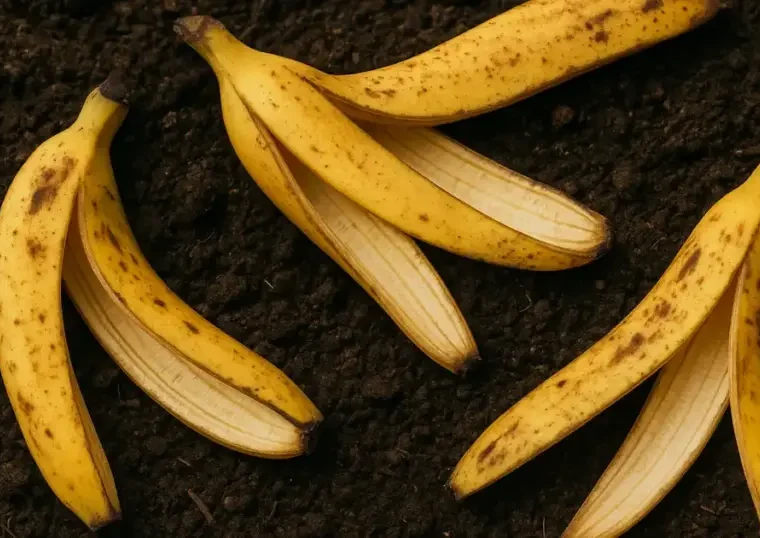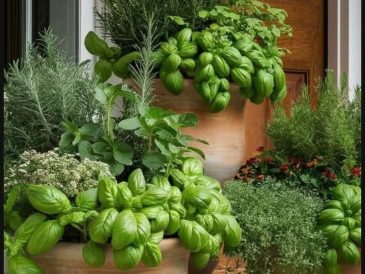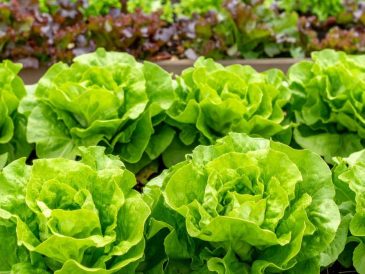Think banana peels are just kitchen waste? Think again. These slippery scraps are bursting with nutrients your garden craves. From fertilizing your tomatoes to keeping pests away, banana peels are a free, eco-friendly way to give your plants a serious boost. So before you toss that peel in the trash, check out these 12 smart ways to use banana peels in your garden—and watch your plants thrive like never before.
1. Bury Them as Natural Fertilizer
This one’s as simple as it gets. Just chop up banana peels and bury them a few inches into the soil near the roots of your plants. As they decompose, they release potassium, phosphorus, calcium, and other micronutrients that help strengthen stems, support flowering, and encourage healthy growth.
Best for: Tomatoes, roses, and peppers.
2. Make Banana Peel Tea for a Nutrient Boost
Give your plants a sip of banana goodness! Soak a few peels in a jar of water for 2–3 days. The result? A potassium-rich liquid fertilizer you can pour right onto your garden soil or use for houseplants.
Pro tip: Use within 24 hours once strained to avoid funky smells.
3. Add to Your Compost Pile
Banana peels are compost gold. They’re high in nitrogen and break down quickly, helping balance the carbon-rich browns like leaves or cardboard. Just remember to chop them up so they decompose faster and don’t attract critters.
Bonus: Speeds up your compost’s breakdown process.
4. Dry and Grind Into Banana Peel Powder
Got a dehydrator or an oven? Dry banana peels, crush them into powder, and sprinkle the powder into your planting holes or mix it into the soil. It’s a slow-release fertilizer that’s easy to store and apply.
Perfect for: Gardeners who like to prep in advance.
5. Use as a Pest Deterrent
Banana peels naturally repel aphids and a few other soft-bodied pests. Wrap a strip of peel around the base of plants or bury near the roots. Aphids hate the smell—and your plant gets a double win with added nutrients.
Important: Keep buried to avoid attracting larger pests.
6. Feed Your Seedlings
Mix finely chopped banana peel into your seed starting mix or place a small piece under each seedling when transplanting. It acts as a mini nutrient bomb as your young plants establish roots.
Gentle and effective—no harsh chemicals needed.
7. Toss Them in the Worm Bin
If you’re into vermicomposting, your red wigglers will love banana peels. They’re soft, moist, and easy for worms to break down—just don’t overdo it. Too many can make the bin too acidic.
Quick tip: Cut into small pieces to speed things up.
8. Shine Plant Leaves Naturally
Got dusty houseplants? Rub the inside of a banana peel on the leaves. It’ll clean them up and leave a natural sheen without harmful chemicals. Plus, the mild residue may help deter pests.
Only for: Waxy, non-fuzzy leaves like pothos or rubber plants.
9. Boost Blooming with a Banana Peel Spray
Blend banana peels with water and a splash of molasses, then strain. Spray directly onto your flowering plants to give them a potassium and sugar boost—ideal during blooming season.
Great for: Roses, hibiscus, and marigolds.
10. Line Planter Bottoms Before Potting
Placing a banana peel at the bottom of your planter gives roots something to chew on as they grow downward. It breaks down slowly and feeds the plant from the bottom up.
Helps: Retain moisture and add nutrients over time.
11. Attract Butterflies (and Bees!)
Lay out banana peel pieces near flowering plants to attract pollinators. The sweet smell draws butterflies and bees, especially when the peel starts to soften and ferment just a bit.
Pro tip: Place peels on a shallow dish to avoid mess.
12. Use as a Grafting Wrap
In grafting, moisture retention is key. Wrapping a banana peel strip around a grafted stem can help keep it moist and encourage successful bonding. It’s not a long-term fix, but handy in a pinch.
Caution: Monitor for mold and remove after a few days.
Why Banana Peels Work So Well
Banana peels are full of potassium, calcium, magnesium, and phosphorus—all essential for strong roots, healthy foliage, and vibrant flowers. Unlike synthetic fertilizers, they release nutrients slowly and naturally, feeding your plants over time without the risk of chemical burn.
Final Thoughts
Next time you eat a banana, don’t just chuck the peel in the trash. Your garden could be the perfect place for it! Whether you bury it, blend it, or brew it into tea, banana peels are a gardener’s secret weapon hiding in plain sight. So go ahead—reuse, recycle, and watch your plants thank you.



